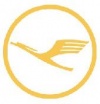US aviation inspections fault Philippine repair station
WASHINGTON—A repair station in the Philippines that services planes for nearly 50 airlines around the world has shown a pattern of stubborn problems that safety experts say underscore concerns about the airline industry’s outsourcing of maintenance to facilities in developing countries.

Lufthansa Technik’s “quality assurance department demonstrated an inability to effectively audit the repair station for compliance with all aspects of (US regulations), specifically, appropriate facilities, tools/equipment, personnel and training requirements,” according to an inspection in May.
A 2009 inspection noted that two in-house inspectors were unfamiliar with FAA aircraft maintenance regulations. The inspectors had recently received four hours of training in the regulations, but weren’t tested for their knowledge afterward, it said.
The same inspection noted that “throughout the repair station numerous personnel are not aware of which airline they are providing maintenance for” and which country’s regulations applied.
The reports show problems scattered throughout the facility rather than in one department, which indicates the problems are systemic, said John Goglia, a former National Transportation Safety Board member and an expert on aircraft maintenance. The result, he said, is an erosion of the margin of safety.
“As they expand into Third World countries to take advantage of the labor rates and lower costs these problems keep coming back because you just don’t have the people infrastructure,” Goglia said. “How many trained people do you think there are the Philippines, in Malaysia and in Indonesia? They are expanding a big operation with a relatively thin technical workforce.”
The Manila facility employs 2,800 aircraft mechanics and other employees. It’s certified by the FAA and aviation authorities from 20 nations to perform maintenance work ranging from routine repairs to major overhauls, according to Lufthansa Technik. The company recently began construction of a new hangar so that Airbus A380s — the world’s largest airliner capable of seating up to 853 passengers — can be serviced at the facility.
The records were obtained from the FAA through a Freedom of Information Act request by a labor union, Unite Here, which represents employees of Lufthansa’s catering subsidiary in North America, SkyChef. The union and the airline are in contract negotiations.
“None of the mentioned FAA audit findings had significant impact on safety and reliability of aircraft and components,” Lufthansa Technik said in a statement.
“Each finding has been treated as an opportunity to enhance the existing system, as it is an industry standard to deal with findings from internal and external audits,” the statement said. “Corrective actions have always been implemented and accepted by the FAA.”
However, the report on last month’s inspection said numerous problems cited in an August 2010 inspection still had not been corrected. “An acceptable corrective plan has been submitted, but due to recent failures, an on-site follow-up inspection … is required,” it said.
Bill Voss, president of the Flight Safety Foundation, an industry-supported group that promotes aviation safety worldwide, said the inspections indicate Lufthansa Technik Philippines has a problem with quality control, but he cautioned against making more general judgments about offshore aircraft repair stations.
“It’s a huge leap to suggest this is representative of all foreign repair stations,” Voss said. “I’m not sure offshore equals bad.”
The FAA said in a statement that it holds foreign repair facilities to the same standards as US facilities. Repair facilities that don’t meet those standards can lose their certification. The FAA has certified Lufthansa Technik Philippines for repairs since 2000.
The Transportation Department Office of Inspector General announced in December it has launched an investigation of the FAA’s oversight of maintenance performed for US passenger airlines by outside contractors, including oversight of overseas repair stations.
A 2008 report by the inspector general said nine big US airlines farm out aircraft maintenance at twice the rate of four years earlier and hire outside contractors for more than 70 percent of major work. While most of the outsourced work is still done in the US, often at nonunion repair shops, more than one-quarter of the repairs are done overseas, it said.
A bill backed by House Democrats that would have required the FAA to step up inspections of foreign repair stations from once a year to twice a year died last year. It was opposed by the European Union, which threatened to cut back on planes its airlines send to repair facilities in the US.
Lufthansa, one of the world’s largest airlines, owns 51 percent of Lufthansa Technik Philippines, while the Philippine MacroAsia Corp. owns 49 percent.
The only US carrier that sends planes to Lufthansa Technik Philippines for major maintenance work is Hawaiian Airlines, which flies to destinations in the Western United States, the Pacific and Asia. Lufthansa, Swiss Air, Qantas, LAN, Philippine Airlines, Cathay Pacific, Vietnam Airlines, Gulf Air, Kuwait Airways and Jet Airways are among some of the other airlines that use the facility for major work.